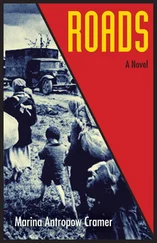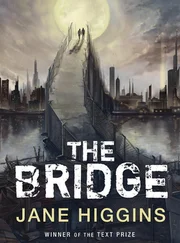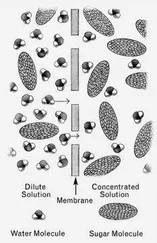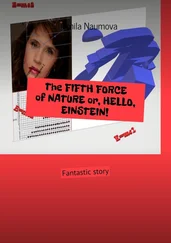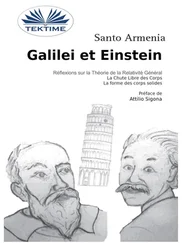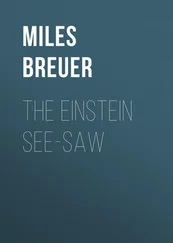The Maker culture, having first learned the techniques of Bridge-making from the Rovans, had proceeded to use the technique to contact the Baltrons, from whom the all-important genetic skills of Reading and Writing had been learned and adopted by the Makers. The Makers had taken in hand their own biological evolution, which had previously been governed by random chance, and had placed it under the control of intelligence for the first time. They had subsequently located and contacted seventeen other civilizations in seventeen different Bubbles of the Cosmos. Each new contact had produced its own revolution in thinking and technology.
And then they had been contacted by the Hive, and everything had changed. It had been a desperate time, a time when his race had come very near to destruction. If one Individual had not Read the initial Hive probe when that contact had been established, the entire Maker civilization would have been destroyed, taken over by cunning Hive nanomachines designed to convert whatever they found into another Hive world. Their world would have become a new Hive Bridgehead in a new Bubble, which could then initiate new Bridges of its own.
The Hive War had been brief. The Makers used an enormous allocation of resources to enlarge the Hive’s Bridge to large macroscopic dimensions, something the Hive apparently did not know how to do, and, with tragic losses and heroic sacrifices, had sent through Individuals and Similarica who had completely destroyed the Hive’s Bridge-making apparatus before retreating and sealing their universe off from further incursions by the Hive. Aside from that which had been Read during the initial attack, the Makers knew very little about the Hive. In subsequent contacts with other intelligent species, however, they had discovered that the Hive was continuing to use the Bridge-making process to systematically reach emerging civilizations and destroy them. To the Hive, this was simply a form of reproduction. It threatened every Bubble in the Cosmos as newly emerging civilizations were systematically located, contacted, and destroyed.
The Maker civilization and some of its contact allies had effectively frustrated this Hive practice by mounting a systematic program of contacting each emerging high civilization before it was reached by the Hive. It was Tunnel Maker’s job to accomplish this for the Makers. And he was now expected to accomplish it without the optimal resources that were needed.
He pushed his resentment to the back of his sensorium and busied himself with preparations for making the Bridge. For producing even a microscopic Bridge it would be necessary to accumulate a large quantity of antimatter in the storage receptacles, an operation requiring a time period of at least half a dozen rotations. When the antimatter energy level was sufficient, the waiting for another ultra-high-energy concentration would begin. The apparatus would trigger on the next occurrence of a sufficiently large concentration in the target Bubble. When this happened, an unimaginably powerful stroke of topological lightning would flash between the universes, and a new Bridge between Bubbles would emerge from the quantum vacuum.
May 29, 2004
February 14,1987
[The SSC is] the most challenging and exciting scientific project which this nation has ever undertaken on the surface ofthe earth… Give our physicists the tools, and they will do the work.
— CONGRESSMAN ROBERT ROE (D.-N.J.)
April 2, 1987
Particle accelerators… have spent [pause] meant so much to our economic growth.
—PRESIDENT RONALD REAGAN IN A RADIO ADDRESS
August 24,1988
I want to be “Robin” to Bush’s “Batman.”
— SENATOR DAN QUAYLE AFTER RECEIVING THE REPUBLICAN NOMINATION FOR VLCE PRESIDENT
November 15,1988
[The SSC] is the most important scientific project that will be built anywhere in the world in the last quarter of the twentieth century.
— SENATOR PHIL GRAMM (R.-TEXAS)
Let’s find the Higgs boson for the Gipper!
— a senate staff member
ROGER STIFLED A YAWN. HE HAD BEEN IN TEXAS FOR only two days, and the jet lag from the shift of seven time zones was still with him. He had been looking forward to attending one of Bert’s famous Texas-style barbecues, but at the moment his body wanted desperately to be in bed sleeping. He’d met so many people here that their names and faces were beginning to blur into one another. He walked away from the gathering around the barbecue pit. Perhaps some exercise would help him to wake up.
Once, when he was perhaps ten, Roger’s school class had toured the Pinewood Studios near London and had visited a Western movie set there. Bert Barnes’s “ranch” reminded him of that outing. The ranch house certainly looked authentic. Perhaps it was, although it had clearly been extensively remodeled and fitted with insulation, double-pane window glass, and central air-conditioning. The interior walls were well-varnished knotty pine decorated with cow horns, deer skins, branding irons, antique guns, serapes, and Remington prints.
The barn was new but looked old. A veneer of silvery-gray weathered wood, perhaps scavenged from some decaying local wooden structures, had been carefully attached to all exterior surfaces of a modern steel-frame building. Its interior was more like a laboratory than a barn. It smelled of plastic and disinfectant, not cow manure.
The fence rails of the corral also looked authentic from a distance, but close up it was clear that they had been made in a factory from pressed wood chips and plastic overlaying a steel core. Their artfully formed “irregularities,” knots, and sweeps of grain could be seen to repeat from rail to rail, and at the ends the steel cores were visible.
Bert strolled over while Roger was inspecting the fence. He clutched a longneck bottle of Pearl beer in his plump hand and gestured with it, like a baton. “Roger, my lad, this is a party,” he said. “You’re here to meet people, not fence posts. As the most eligible bachelor in my group, you have, um, certain obligations and responsibilities to fulfill. Come on over to the grill. There are some folks I’d like you to meet.” Bert led the way behind the ranch house. Roger noted with interest Bert’s Stetson, his Western shirt with pearl snaps for buttons, his factory-faded and softened broad-cut jeans, his coordinated silver and turquoise bolo tie, belt buckle, and cuff links, and his high-heeled rawhide boots, complete with silver spurs. Bert did nothing in half-measures.
He walked up to a pair of attractive young women who were standing beside the stone barbecue pit. One of the women was tall and blonde, a slimmer version of Bert with the same narrow nose and rounded forehead. The combination looked much better on her. The other was shorter, with high cheekbones and long dark hair that glistened in the twilight. “Ladies,” Bert said, “I’d like you to meet our new arrival from CERN. This is Roger Coulton. He’s already one of the leading theorists of his generation, and he’s just getting started. He’s a bachelor and a Brit: Harrow, Oxford, Cambridge, and all that. But don’t worry, ladies. I’m told he likes girls, despite his education.”
Roger blinked.
“He works in my group at the SSC, and he’s absolutely brilliant. Had to be, or we wouldn’t have hired him. And if he doesn’t stay brilliant, we’ll kick his ass out. Right, Roger?”
“Of course,” Roger said smoothly and smiled, feeling an inner twinge of anxiety that Bert might know about the recent problem with his new approach. The women looked at him appraisingly, he noticed.
“Roger, this is my daughter, Virginia, and this is her best friend, Susan Elliott. They were roommates in college. Virginia teaches history at Brown, and she’s here for a short visit. Susan is a molecular biologist. She now works for a molecular bioengineering company in Dallas.”
Читать дальше

